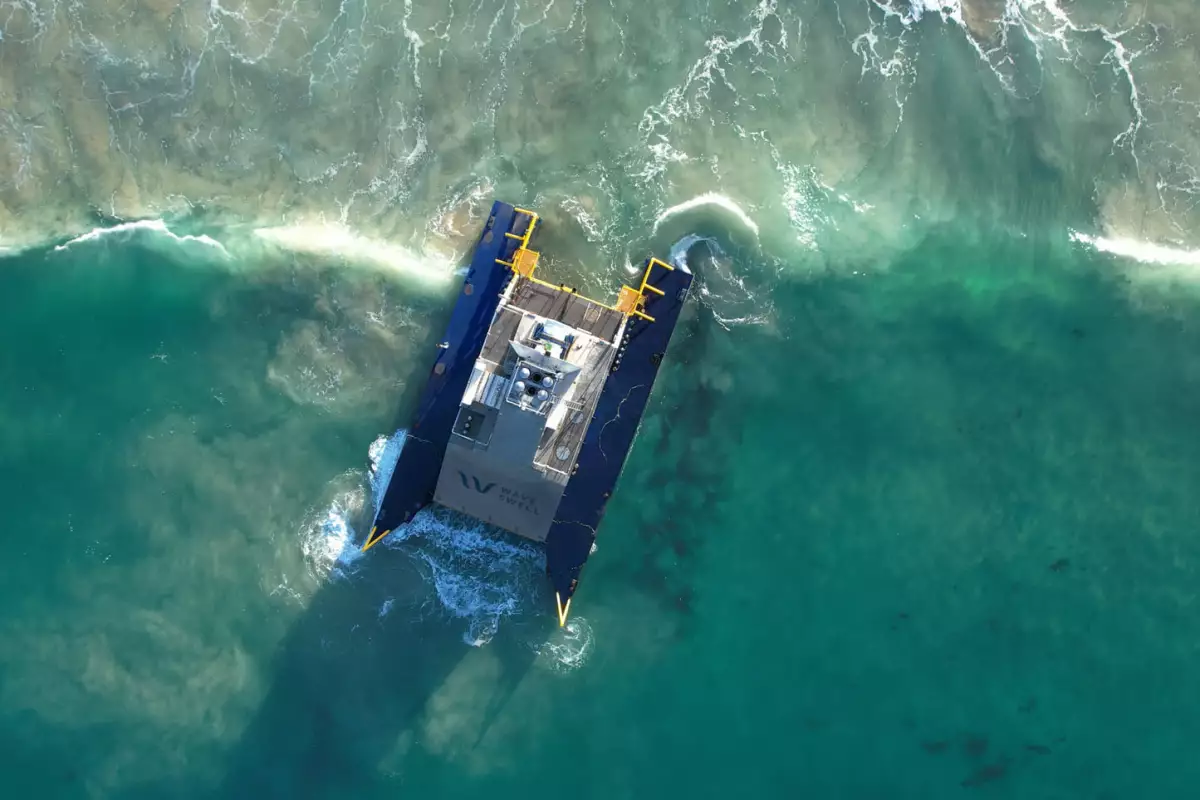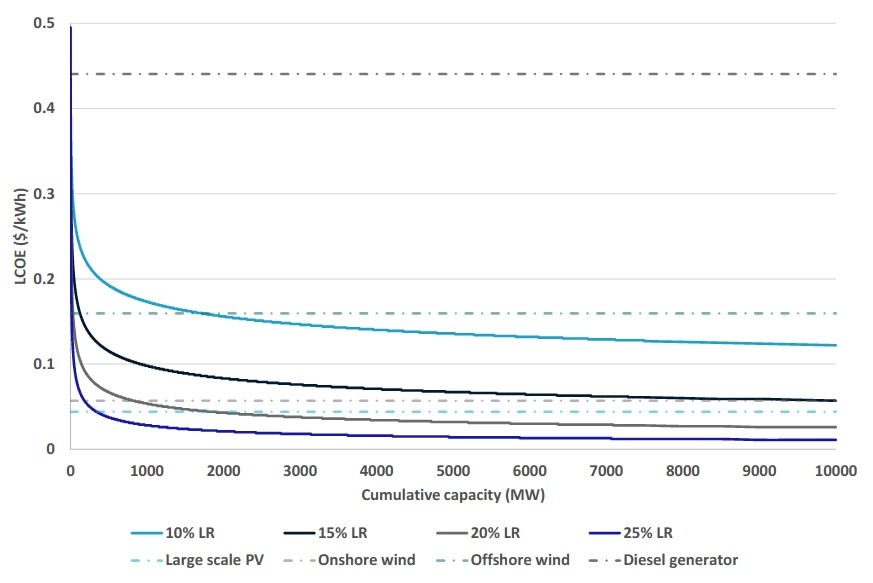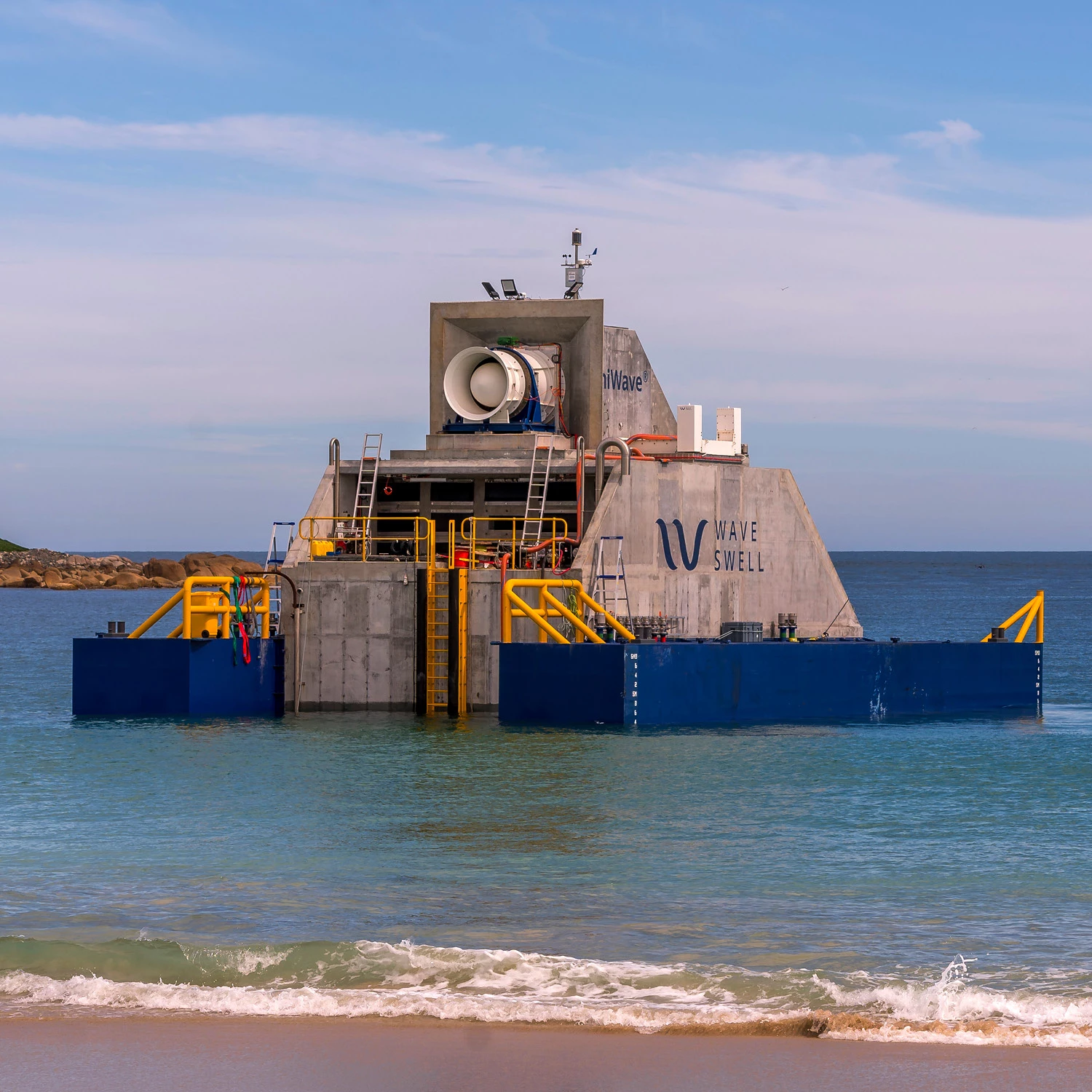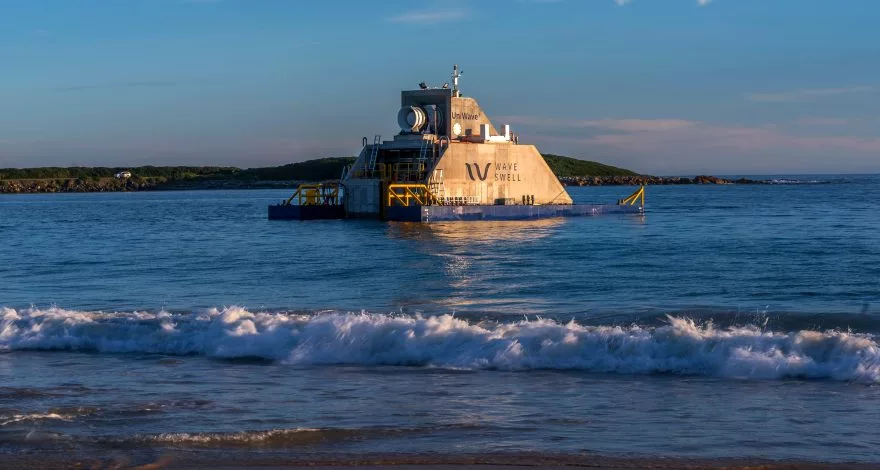The UniWave sea platform is an artificial blowhole that harvests energy from ocean waves. Independent analysts now predict it'll create some of the cheapest renewable energy on the market – and some of the most reliable and predictable, as well.
We first encountered Wave Swell Energy (WSE) and the UniWave back in early 2021. This curious, half-sunken-looking concrete structure is designed to efficiently replicate the shape of a natural blowhole – a rock formation that channels waves in at the bottom and features a hole further up the top. As the waves move into the channel, they push out the ambient air through the hole – sometimes causing water to come spouting out as well.
The UniWave creates a similar effect, letting air and water push freely up a channel and through an outlet valve. Then, the valve closes as the wave recedes, creating a powerful vacuum in the chamber, and air is sucked in through an inlet at the top of the device, where it runs through a turbine and generates electricity. Why not harvest the in-stroke as well? WSE says its design is simpler and cheaper than devices that try to harvest energy both ways. Its turbines should also last longer, given that they're not getting salt water splashed through them.

The company built a 200-kilowatt prototype, and in July it wrapped up a full year of testing off Australia's King Island, reporting excellent results that exceeded the company's expectations. It's now gearing up for production, positioning UniWave devices as either standalone renewable power units or proposing to build them into breakwaters, seawalls and coastal erosion prevention projects.
All of which is terrific, but the success of a renewable energy project is highly dependent on cold, hard cash. WSE was not able to provide a Levelized Cost of Energy (LCoE) when last we spoke, but the company has now presented the results of an independent analysis undertaken by Australia's highly respected Commonwealth Scientific and Industrial Research Organisation (CSIRO).
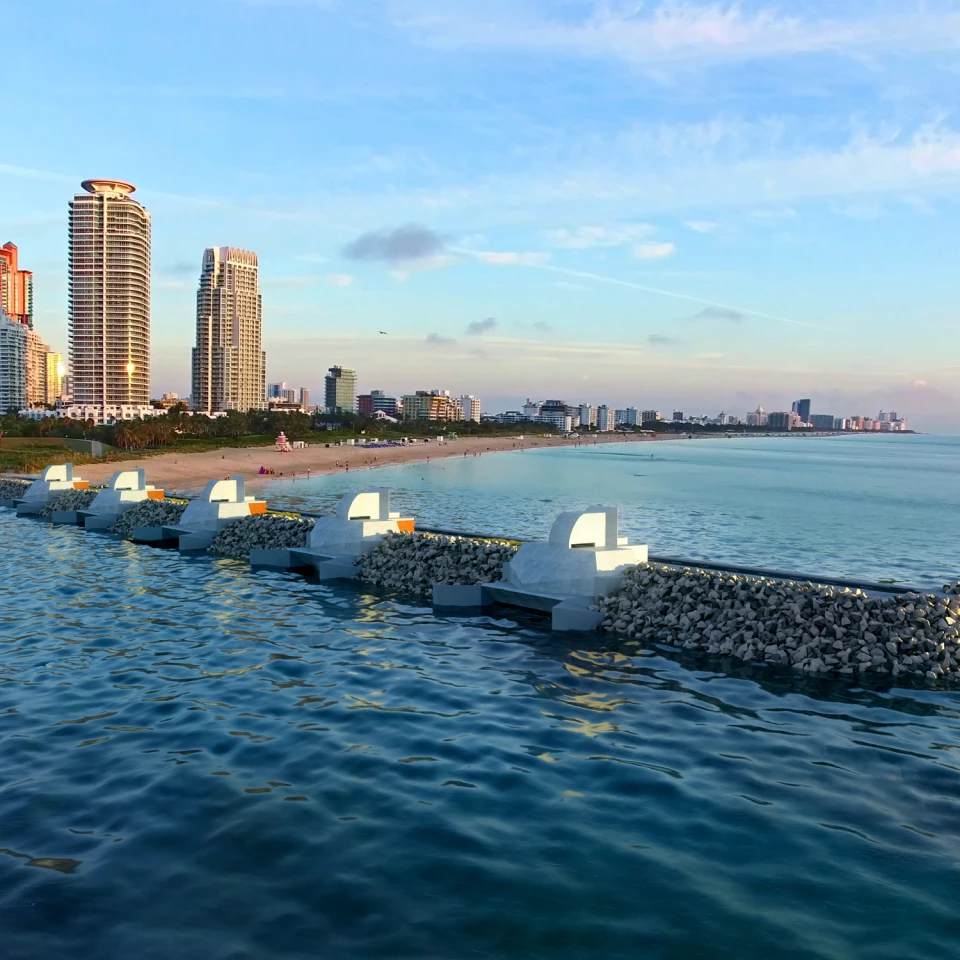
The news is frankly pretty amazing. Part 1 of he CSIRO report finds that in its current early form, a 1-MW UniWave unit already has an LCoE roughly competitive with running a diesel generator at a remote location. But applying an industry-wide "learning rate," the report predicts that "the WSE technology can achieve an LCoE of AU$0.05 (US$0.032)/kWh, which is equal to the current lowest cost generation of onshore wind and solar, if it can reach a deployment of 2,500 MW of installed capacity."
Although 2,500 MW of installed capacity might sound like a lot, the report notes that this is only about a third of one percent of the installed capacity that solar and wind energy had to roll out before reaching the low costs they now enjoy. In the CSIRO's "achievable" scenario, blowhole power would become some of the world's cheapest energy as soon as 2030.
In a "conservative" scenario, it might take until the mid-2040s to become competitive with the cheapest renewables. Mind you, the CSIRO says the rock-bottom LCoE stated above does not take into account any potential improvements in conversion efficiency – so energy from the UniWave could well end up being even cheaper as WSE continues development.
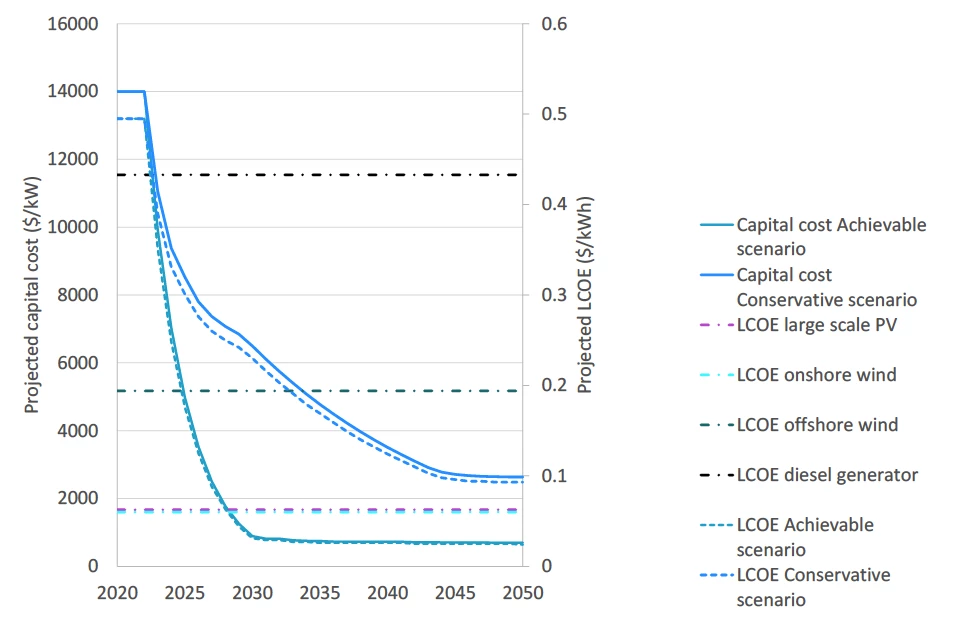
The news gets even better for WSE in the second part of the report, where the CSIRO team examined the blowhole generators as part of a hybrid energy system including wind, solar and flow batteries for energy storage. Solar and wind, of course, are both to some degree unreliable. Wave energy is much more predictable, and that has a huge effect on the overall cost of a renewable energy system that needs to guarantee a certain level of service – particularly as fossil fuels are phased out.
Part two laid out scenarios for three renewable energy resources positioned along the southern coast of Australia's mainland, examining various hybrid configurations through the lenses of up-front CapEx (Capital expenditure) and dispatchability – defining the latter as "a threshold of power that can be guaranteed for a given time-period, divided by the average power for that time-period." Effectively, dispatchability is the percentage of average power below which a system's output can be expected never to drop, and the Australian Energy Market Operator (AEMO) has set the standard at around 0.8.
That means renewable projects without blowhole generators will generally need enough battery to guarantee 80% of the average system power when the sun's not shining and the wind's not blowing. But with these UniWave devices on board, the batteries can be much smaller, and the overall system significantly cheaper. On current figures, the CSIRO team found that hybrid systems including blowhole generators were the cheapest configurations for any system with a dispatchability higher than 0.36.
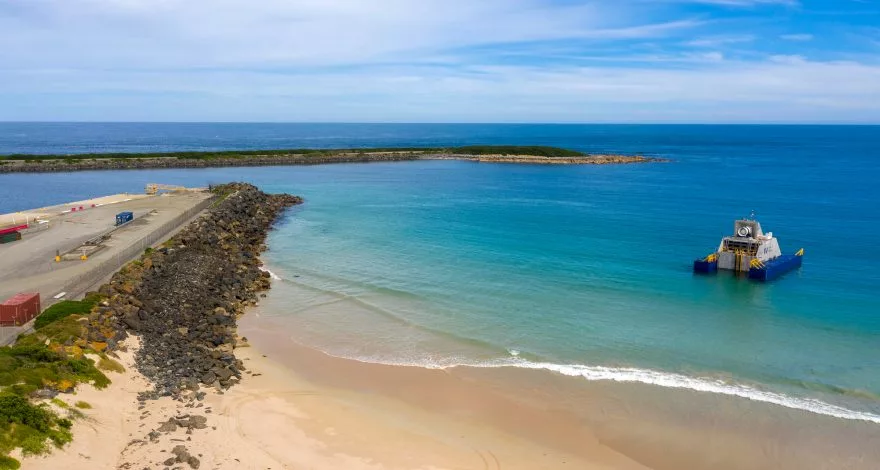
Getting closer to that 0.8 mark, the difference becomes huge. A 70% dispatchable hybrid system that pairs a battery with equal capacities of offshore wind, solar and blowhole generators would have an up-front CapEx three times cheaper than one without it.
All of which is to say, things are looking extremely positive for this emerging clean energy tech. A radically low LCoE, combined with cheap up-front costs and super-predictable generation curves is a potent combination, even if this tech will only be appropriate for certain coastal sites. The CSIRO projects that wave energy as a sector can scale up to provide some 1.3% of global energy demand by 2050, or around 170 GW of installed capacity. WSE's job now is to start getting these things deployed at scale, and keep on improving the design.
Check out a video detailing the prototype's year of testing below.
Sources: CSIRO report 1, CSIRO report 2
